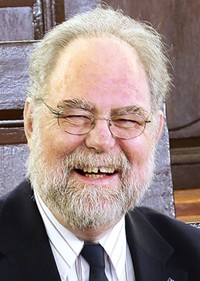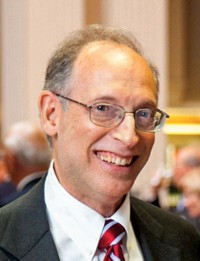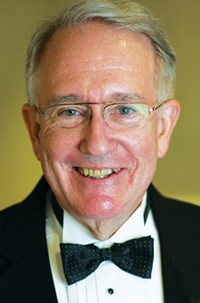Advertisement
Grab your lab coat. Let's get started
Welcome!
Welcome!
Create an account below to get 6 C&EN articles per month, receive newsletters and more - all free.
It seems this is your first time logging in online. Please enter the following information to continue.
As an ACS member you automatically get access to this site. All we need is few more details to create your reading experience.
Not you? Sign in with a different account.
Not you? Sign in with a different account.
ERROR 1
ERROR 1
ERROR 2
ERROR 2
ERROR 2
ERROR 2
ERROR 2
Password and Confirm password must match.
If you have an ACS member number, please enter it here so we can link this account to your membership. (optional)
ERROR 2
ACS values your privacy. By submitting your information, you are gaining access to C&EN and subscribing to our weekly newsletter. We use the information you provide to make your reading experience better, and we will never sell your data to third party members.
People
Landmark For Izaak Kolthoff
by Linda Wang
November 17, 2014
| A version of this story appeared in
Volume 92, Issue 46
Challenge yourself with a crossword puzzle honoring Kolthoff at http://cenm.ag/koltcross.
Until the 1900s, the field of analytical chemistry was considered something of an art, rather than a fully scientific discipline, and chemical analysts were generally considered laboratory technicians rather than bona fide scientists. But thanks to Izaak Maurits (Piet) Kolthoff, who is known as the father of modern analytical chemistry, the field is today an essential branch of chemistry used in disciplines as diverse as clinical medicine, environmental studies, forensics, and food and drug safety.
Kolthoff’s seminal work and contributions to society earned him a designation as an American Chemical Society National Historic Chemical Landmark on Sept. 12 during a ceremony at the University of Minnesota, Twin Cities (www.acs.org/landmarks). As part of the celebration, Minnesota Gov. Mark Dayton designated Sept. 12 as Izaak M. Kolthoff Day. A research symposium also took place in Kolthoff’s honor.

“Kolthoff emerged at a time when chemical analysis was a subservient discipline that lacked articulated principles,” said ACS Immediate Past-President Marinda Li Wu during the ceremony. “His signature contribution was to provide a unified scientific basis for the methods that already existed and to develop them further, weaving theory and practice into his writings and teachings. The result transformed the field and brought chemical analysis into the modern era of science.”
Kolthoff earned a Ph.D. in chemistry from Utrecht University, in the Netherlands, in 1918. In 1927, he accepted a one-year appointment, which later became permanent, to lead the University of Minnesota chemistry department’s division of analytical chemistry. His research transformed the ways by which scientists separate, identify, and quantify chemical substances and built the field upon solid theoretical principles and experimental techniques.
During World War II, American chemists were recruited to solve the rubber shortage crisis, either by finding domestic sources or by creating synthetic rubber. Kolthoff helped develop a recipe for synthetic rubber that was known as the “cold process.” The process, which is still used, is regarded as one of his most important research contributions.
Kolthoff published nearly 1,000 scientific papers and influential books on such far-ranging areas of analytical chemistry as acid-base indicators, acid-base chemistry in nonaqueous media, polarography, and titration. The classic series “Treatise on Analytical Chemistry,” coedited with Philip J. Elving of the University of Michigan, is among the most significant reference works in the field.
In addition to his research accomplishments, Kolthoff participated in the founding of the ACS Division of Analytical Chemistry in 1938 and served on the editorial boards of ACS’s Industrial & Engineering Chemistry Analytical Edition and Analytical Chemistry.
Taking advantage of his international relationships, Kolthoff pressed for the establishment of an analytical body within the International Union of Pure & Applied Chemistry and was instrumental in founding the organization’s analytical division in 1951.
Announcements of ACS news may be sent to acsnews.cen@acs.org.





Join the conversation
Contact the reporter
Submit a Letter to the Editor for publication
Engage with us on Twitter